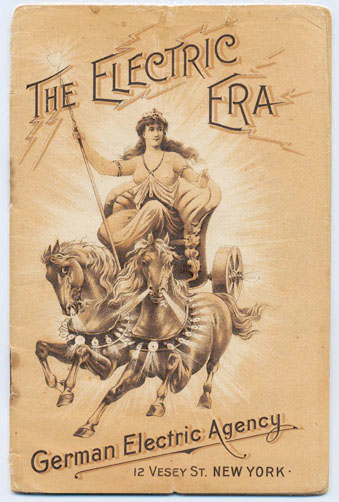
About
the "Cover" Image
“The Electric Era,” German
Electric Belt Agency (New York, ca. 1901), ephemera collection. (Courtesy
of The Bakken Library and Museum, Minneapolis.)
Carolyn Thomas de la Pena give a great critic of this image in her
book, The Body Electric: How Strange Machines Built the Modern
America
(pp.
161). She says:
“The Electric Era,” a brochure for the German Electric
Agency published in 1901, is unusual in that it features a woman on
its cover. One might,
at first glance, think of the cover as an appeal to women as consumers.
However, positioned as an icon of its era, the image implies something
quite different. Its primary actors are the horses, two virile black
stallions with muscles taut, harnessed to pull the carriage into the
electric age. The female, a figure resembling Columbia, one of the
national symbols of the United States commonly used in patriotic iconography,
sits passively behind the stallions, carrying a beacon of progress
in her right hand, the beam of electric light. Given that German Electric
sold products primarily to men, it is logical that readers were meant
to identify with the visibly male characters here. It is the stallions
that are in control; their pores literally ooze electricity as it radiates
from the belts around their necks. The Columbia figure, thought in
the driver’s seat, holds no reins, implying that she has given over
her power to the stallion guides and will contentedly follow the lead
of men and their technology to share in the electric glow.
Introduction/Site
Map | Classroom Resources | Bibliography
|

